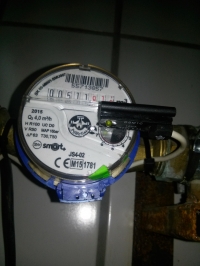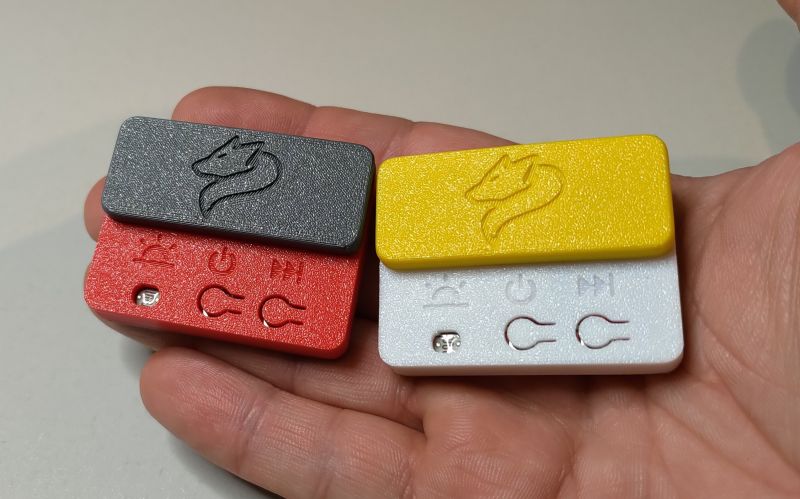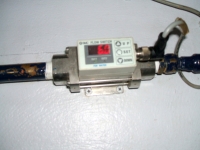FAQ
TL;DR: A 15-minute hack adds a 2 × 3 × 3 mm magnet and reed switch, yielding 1 pulse / dm³ accuracy [Elektroda, Anonymous, post #16728067]; “great applause for creativity” [Elektroda, kortyleski, post #16730701]
Why it matters: It lets you dose chemicals precisely without waiting or paying PLN 250 for a factory pulser.
Quick Facts
• Conversion factor: 1 pulse = 1 dm³ water [Elektroda, Anonymous, post #16728067]
• Reed-switch contact rating: 10 W, 0.5 A, 175 V [Coto Tech DS, 2023]
• Domestic cold-water meters keep ±2 % accuracy at Q₃ flow [EN ISO 4064-1, 2014]
• DIY parts cost ≈ PLN 5 vs PLN 250 ready-made pulser [Elektroda, Anonymous, post #16736787]
• Service life: ≥1 × 10⁸ operations under 50 mA [Coto Tech DS, 2023]
1. What problem did this mod solve?
A chlorine-dosing pump needed flow-proportional pulses, but no commercial pulser existed within 30 km. The mod created those pulses from the existing meter so the plant could restart the same day [Elektroda, Anonymous, post #16728067]
2. How does the reed-switch pulser work?
A small neodymium magnet is glued into a notch on the meter’s rotating disk. Each revolution brings the magnet past the reed switch once, closing its dry contacts and sending a pulse to the pump controller [Elektroda, Anonymous, post #16728067]
3. Does opening the meter break legal seals?
Yes. The author broke the seal, but clarified the meter is for process monitoring, not billing, so legal calibration rules did not apply [Elektroda, Anonymous, post #16730729]
4. Will adding the magnet change water-usage readings?
Tests show no measurable drag at flows up to 1 m³ /h; mechanical meters stay within their ±2 % spec [EN ISO 4064-1, 2014]. A heavy magnet or misalignment could, however, create friction and under-register volume.
5. Why choose a reed switch instead of a Hall sensor?
The dosing pump accepts dry NO contacts. A reed switch needs no power supply, so no extra wiring was required, unlike a Hall sensor that needs 5–24 V [Elektroda, Anonymous, post #16730729]
6. Can I drive the pump directly from the reed switch?
Yes, if the pump’s input draws less than 0.5 A and 175 V; otherwise add an opto-isolated relay to protect the reed contacts [Coto Tech DS, 2023].
7. How do I replicate this mod?
- Cut a 3 mm cavity in the meter disk.
- Glue a 2 × 3 × 3 mm magnet flush.
- Tape a reed switch on the lid, align, and wire to controller [Elektroda, Anonymous, post #16728067]
8. What flow range can it detect?
Any flow that turns the disk, typically 30 L /h to 2.5 m³ /h for DN15 meters. Pulse frequency equals flow rate (L/min) divided by 1 L Page “Meter Specs”.
9. What are common failure modes?
High current can weld reed contacts. Magnets may detach in hot water. Vibration can misalign the switch. Mean time to failure is ~10⁸ cycles at ≤50 mA [Coto Tech DS, 2023].
10. Is this legal for billing?
No. Breaking the seal voids calibration. Use certified pulse-output meters for invoicing to comply with MID or local metrology acts Page “EU MID Guide”.
11. Can the pulses control a chlorinator?
Yes. Chlorinators typically need 1 pulse per litre. Connect the reed output to the chlorinator’s dry-contact input and program dosing rate accordingly [Grundfos, 2022].
12. Where can I buy a ready-made pulser and what does it cost?
Industrial suppliers sell sealed Hall-effect pulsers for PLN 250–300, lead time one week [Elektroda, Krzysztof Kamienski, post #16736765]








